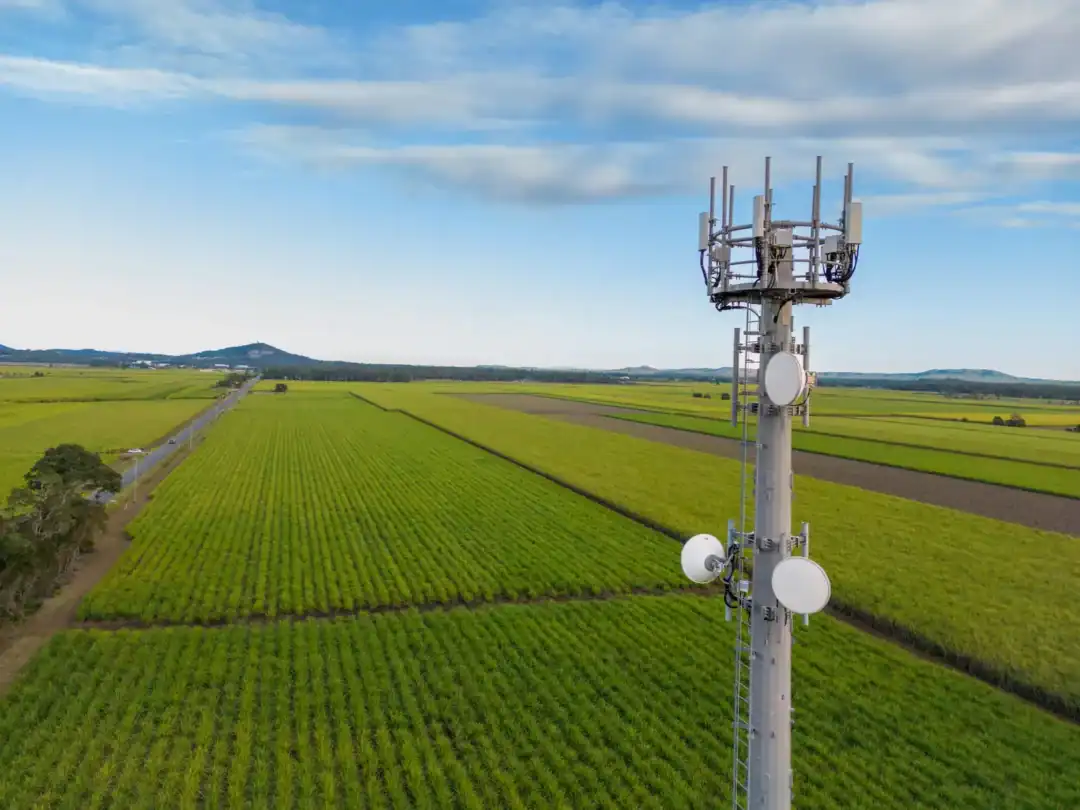In the rapidly evolving world of telecommunications infrastructure, Real Estate Investment Trusts (REITs) specializing in cell towers have emerged as pivotal players. With the explosion of mobile data demand driven by smartphones, streaming services, and the march toward 5G technology, cell towers are invaluable assets. For REITs focusing on these properties, monetizing investments effectively is vital to maintaining growth, generating steady income, and maximizing shareholder value. Two primary strategies have surfaced as dominant approaches in the industry: sale-leaseback transactions and build-to-suit arrangements. Understanding the nuances, advantages, and considerations of each method is crucial for investors, developers, and telecom operators alike.
Understanding Cell Tower REITs
Cell tower REITs own and operate communication towers leased to wireless service providers. These REITs function as landlords, collecting rent from carriers who place antennas and other equipment on the towers to deliver network coverage. Unlike traditional real estate investments, the value of cell tower assets hinges largely on location quality, lease terms, and tenant profiles rather than just the physical structure itself.
Because telecom companies seek to limit capital expenditures and focus on core operations like network management and customer service, they often look to monetize their real estate holdings. To this end, they opt for monetization strategies that allow unlocking value from tower assets without disrupting service continuity or long-term network plans. This desire has fueled the popularity of sale-leaseback and build-to-suit deals.

The Sale-Leaseback Model
Sale-leaseback agreements are well-established across various real estate sectors but have found particularly strong footing within telecom infrastructure. In a sale-leaseback, the telecom operator sells an existing tower or portfolio of towers to a REIT but concurrently signs a lease agreement to continue occupying the site. This arrangement transforms what was once a capital asset on the company’s balance sheet into a stream of lease expenses, thereby freeing up capital for network expansion or other strategic initiatives.
The most attractive feature of sale-leasebacks is the immediate infusion of cash from asset sales, which can be substantial given the high value of cell tower real estate concentrated in prime locations. Since the telecom company remains a tenant, continuity in network deployment and maintenance is preserved, mitigating operational risk. Additionally, the REIT gains stable, long-term rental income backed by strong covenant tenants—major wireless carriers—making this a relatively low-risk investment.
One must consider that sale-leaseback deals typically involve triple-net leases, where the tenant takes responsibility for taxes, insurance, and maintenance costs, reducing landlord obligations. Lease terms often span 10 to 15 years, sometimes with multiple renewal options, providing significant income predictability for REITs.
However, telecom companies relinquish ownership and, with it, some control over the property. While leases generally protect tenants’ rights to use the tower and upgrade equipment, future negotiations or lease renewals introduce potential uncertainties. Furthermore, sale-leasebacks may attract purchase price discounts reflecting market conditions, lease terms, and property-specific risks.
Build-to-Suit Arrangements
Conversely, build-to-suit strategies involve a REIT funding or developing a new tower constructed specifically to meet a tenant’s requirements. Rather than acquiring existing assets, the REIT partners closely with the telecom company from the outset to design and build infrastructure tailored to precise specifications such as height, location, and capacity.
This approach can be advantageous for both parties. Telecom operators gain access to state-of-the-art facilities configured for optimal network performance without fronting capital expenditures. The REIT benefits by securing long-term, “anchor” tenants before deployment, which can reduce vacancy risk and enhance cash flow stability.
Build-to-suit deals often follow triple-net lease structures similar to sale-leasebacks, with long-term contracts that include scheduled rent escalations. These agreements can also encompass exclusive tenant rights, limiting competitive leasing opportunities on or near the site.
From a financial perspective, build-to-suit projects can require more upfront capital and entail construction risk. Delays, regulatory hurdles, or cost overruns in tower erection can impact project timelines and returns. Yet, successful execution can yield higher returns over time due to modern assets attracting premium rents and longer lease renewals.
Moreover, build-to-suit towers often respond to emerging coverage needs where no existing infrastructure satisfies demand, hence expanding network footprints into previously underserved areas. This ability aligns with the growing impetus toward rural broadband expansion and densification in urban markets.
Comparative Analysis
Several factors influence the choice between sale-leaseback and build-to-suit strategies for cell tower REITs and their tenants.
Capital and Risk Management: Sale-leasebacks provide immediate liquidity for telecom companies by unlocking value from existing assets without construction uncertainty. Build-to-suit requires more time and capital intensity from REITs but offers newer assets and potentially higher lease returns.
Control and Flexibility: Sale-leasebacks reduce property ownership but maintain operational control through leases. Build-to-suit projects are shaped collaboratively upfront, often granting tenants tailored access but with less influence over timing after agreement signing.
Market Dynamics: Sale-leasebacks enable quick monetization in markets with existing tower infrastructure, important during times of rapid network upgrades, such as 5G rollouts. Build-to-suit supports organic growth in emerging markets or fills gaps in coverage.
Lease Economics: Both strategies rely on triple-net leases and long terms with escalations, but build-to-suit towers can command higher rents due to customization and newer technology incorporation.
Portfolio Diversification: REITs often employ a blend of both approaches, balancing stable income from sale-leasebacks with growth opportunities from build-to-suit developments.

Industry Trends and Future Outlook
The telecom landscape is changing aggressively, driven by increasing data consumption, Internet of Things (IoT) proliferation, and next-generation technologies like 5G and potentially 6 G. Cell tower REITs must remain agile in their monetization strategies to keep pace with evolving network demands.
Sale-leasebacks continue to dominate as carriers seek to optimize balance sheets post-major network investments. However, the shift toward densification—requiring smaller cell sites and distributed antenna systems—fuels demand for innovative build-to-suit models, sometimes on rooftops, street furniture, or indoor locations beyond traditional towers.
Similarly, regulatory environments impact tower development and leasing. Local zoning, aesthetics, and community concerns can influence timelines or feasibility, making collaborative planning essential for build-to-suit projects.
In addition to traditional wireless operators, new entrants such as private network providers and edge computing companies influence how REITs structure deals. Custom-built towers may become more attractive to these niche tenants, while sale-leasebacks remain favored by established national carriers.
Conclusion
For cell tower REITs, monetization through sale-leaseback and build-to-suit strategies offers complementary pathways to capitalize on the growing telecom infrastructure market. Sale-leasebacks enable rapid unlocking of asset value and stable income streams, while build-to-suit allows investment in modern, customized infrastructure aligned with future network expansion.
The choice between these approaches depends on financial objectives, market conditions, risk tolerance, and tenant needs. Successful REITs craft portfolios that blend both models, balancing immediate returns with sustainable growth. As technology and demand for connectivity advance, mastering these monetization techniques will continue to be a cornerstone of cell tower REIT strategy and profitability.
Frequently Asked Questions about Cell Tower REIT Monetization Strategies
1. What is a sale-leaseback in the context of cell tower REITs?
A sale-leaseback is when a telecom company sells its cell tower assets to a REIT and simultaneously leases them back, gaining immediate capital while continuing to operate the towers.
2. How does a build-to-suit arrangement work for cell towers?
In a build-to-suit, a REIT constructs a new tower based on a tenant’s specifications and signs a long-term lease with the telecom operator before or after completion.
3. What are the benefits of sale-leaseback for telecom companies?
Sale-leasebacks provide immediate liquidity, reduce asset ownership burden, and allow telecom companies to focus capital on network expansion rather than infrastructure.
4. Why do REITs prefer triple-net leases in these deals?
Triple-net leases shift property expenses like maintenance, taxes, and insurance to the tenant, providing REITs with predictable, low-risk rental income.
5. Which monetization strategy involves more upfront construction risk?
Build-to-suit arrangements involve construction risk since the REIT funds and manages new tower projects, unlike sale-leasebacks, which deal with existing assets.
6. Can build-to-suit towers adapt better to future technology needs?
Yes, build-to-suit towers are custom-designed, allowing for modern technology integration and flexibility, which more effectively supports upgrades like 5 G.
7. How do market dynamics influence the choice between these strategies?
Sale-leasebacks suit mature markets with existing towers, while build-to-suit targets emerging markets or areas needing new infrastructure to improve coverage.
8. Do telecom operators lose control over assets when choosing sale-leaseback?
While ownership transfers to the REIT, lease agreements protect the telecom operator’s rights to use and upgrade the tower, maintaining operational control.










